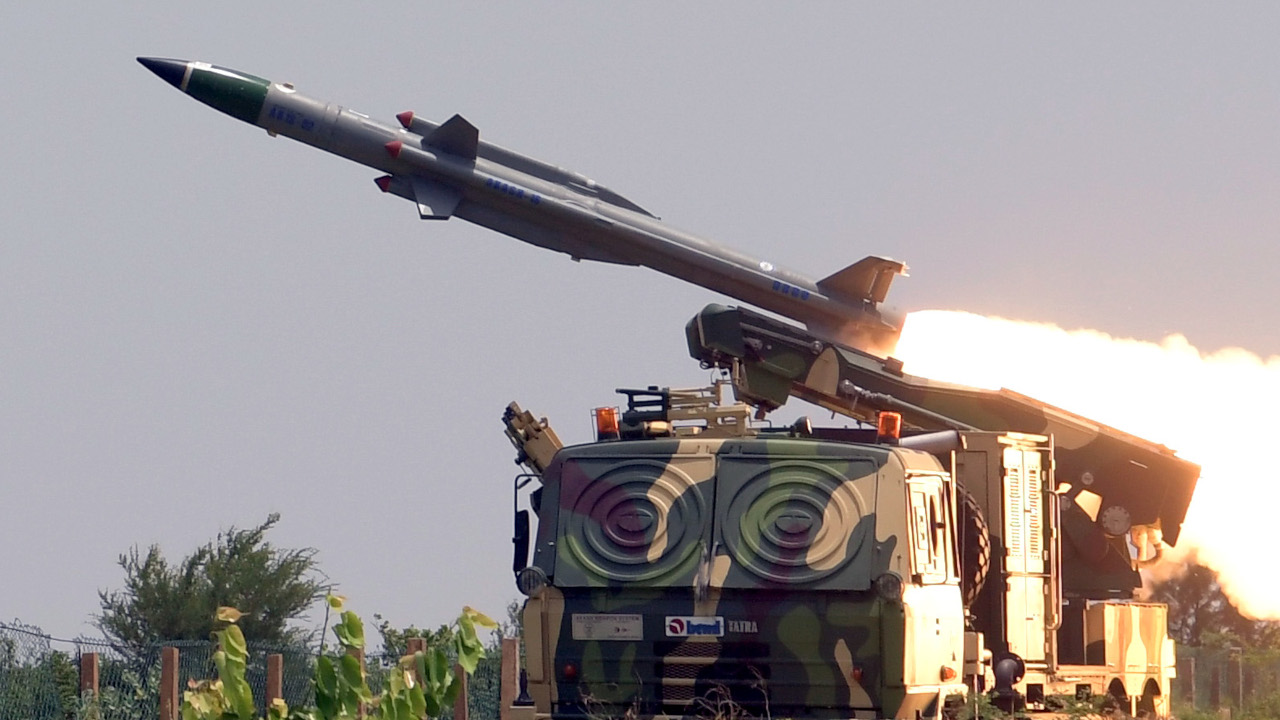SOURCE: RAUNAK KUNDE / NEWS BEAT / IDRW.ORG


India is positioning itself as a formidable player in Brazil’s ambitious plan to overhaul its air defence capabilities, with the Indian-made Akash surface-to-air missile (SAM) system emerging as a top contender in the South American nation’s Medium/High Altitude Air Defence Artillery System project. Launched under Ordinance EME/C Ex. No. 1,338/2024 in June 2024, the project aims to bolster Brazil’s ability to protect its vast territory and critical installations.
The Akash, developed by India’s Defence Research and Development Organisation (DRDO), is competing head-to-head with China’s Sky Dragon 50, setting the stage for a high-stakes contest that could reshape India’s defence export footprint in Latin America. For Brazil, the Akash represents a significant leap forward from its outdated systems, offering enhanced range, multi-target engagement, and cost-effectiveness, while a potential government-to-government (G2G) deal could expedite procurement and deepen bilateral ties.
Brazil’s air defence capabilities are currently limited, with existing systems like the Russian 9K38 Igla and Swedish RBS 70 restricted to intercepting threats at altitudes up to 3,000–5,000 meters and ranges below 7 kilometers. These short-range, man-portable systems are inadequate for protecting Brazil’s expansive 8.5 million square kilometer territory, which includes vital military bases, urban centers, and economic assets like offshore oil platforms in the “Blue Amazon.” The Medium/High Altitude Air Defence Artillery System project, part of the Brazilian Army’s Strategic Program for Air Defence, seeks to address this gap by acquiring a modern SAM system capable of engaging threats at higher altitudes and longer ranges.
The Brazilian Army’s evaluation, initiated with a Request for Quote (RFQ) in November 2023 and followed by a second RFQ in February 2024, reflects a meticulous approach to selecting a system that balances performance, cost, and strategic alignment. A committee established by the Chief of Staff of the Brazilian Army is tasked with delivering a comprehensive report by October 2025, evaluating the Akash and Sky Dragon 50 based on technical capabilities, operational effectiveness, and potential for industrial cooperation. Posts on X highlight the urgency of this modernization, with one user noting, “Brazil’s current systems can intercept threats only up to 3,000m far below Akash’s capabilities.”
The Akash SAM system, operational with the Indian Army and Air Force since 2015, offers Brazil a robust solution to its air defence needs. Developed under DRDO’s Integrated Guided Missile Development Programme (IGMDP), the Akash is a medium-range SAM with a range of 25–45 kilometers and an operational ceiling of 18,000 meters, far surpassing Brazil’s current capabilities. Its ability to engage multiple targets simultaneously—up to four aerial threats, including fighter jets, cruise missiles, and UAVs—makes it a versatile asset for protecting key installations. The system’s Rajendra radar can track 64 targets and guide 12 missiles concurrently, with an 88% kill probability for the first missile and 99% for the second.
At a cost of under $500,000 per missile—less than half the $1.2–1.5 million for Western equivalents like the Patriot—Akash offers Brazil a cost-effective solution without compromising performance. Its indigenous design, involving Bharat Dynamics Limited (BDL), Bharat Electronics Limited (BEL), and private firms like Tata Power and Larsen & Toubro, ensures supply chain reliability and potential for technology transfer, aligning with Brazil’s emphasis on industrial self-reliance.
The Akash faces stiff competition from China’s Sky Dragon 50, a medium-range SAM developed by Norinco with a reported range of 50 kilometers. While specific performance details remain limited, the Sky Dragon 50’s reliance on passive phased array radar and its integration with Chinese command systems may pose compatibility challenges for Brazil, which operates a mix of Western and Russian equipment. A Brazilian Army delegation witnessed a live-fire demonstration of the Sky Dragon 50 in China in 2023, but the system’s lack of transparency regarding range and multi-target engagement capabilities has raised questions about its suitability.
In contrast, the Akash’s proven track record, demonstrated during a 2023 live-fire event attended by Brazilian Army Chief General Paiva, has bolstered India’s bid. The system’s ability to destroy four targets simultaneously in a December 2023 test underscored its technological edge, earning praise from Brazilian observers. , “Brazilian Army Chief during his visit to India in 2023 evaluated Akash & was happy with result.” India’s offer of a G2G deal, potentially bypassing lengthy tender processes, further strengthens its position, as Brazilian officials reportedly favor this approach to accelerate procurement.
The Akash deal represents more than a commercial transaction, signaling a deepening of India-Brazil defence ties within the framework of South-South cooperation. Brazil’s evaluation of the Akash follows Armenia’s $690 million order for 15 Akash systems in 2023, with the first battery delivered in November 2024, establishing India’s credibility as a defence exporter. Interest from countries like the UAE, Philippines, Egypt, and Vietnam further underscores the Akash’s global appeal.
A potential G2G deal could include reciprocal arrangements, with speculation that India might consider Brazil’s Embraer C-390 Millennium for its Medium Transport Aircraft (MTA) program. A February 2024 MoU between Embraer and Mahindra Defence Systems for co-development and assembly of the C-390 in India highlights this synergy.
India’s Export-Import Bank (Exim Bank) plans to open its first office in Brazil by June 2025 to facilitate low-cost financing for defence exports, aligning with India’s goal of reaching $6 billion in defence exports by 2029. Beyond air defence, Brazil has expressed interest in co-developing naval platforms and small arms, leveraging India’s expertise in shipbuilding and initiatives like the Scorpène Club for submarine maintenance.
NOTE: Article cannot be reproduced without written permission of idrw.org in any form even for YouTube Videos to avoid Copy right strikes. Websites doing illegal reproductions will get DMCA and Legal Notices.